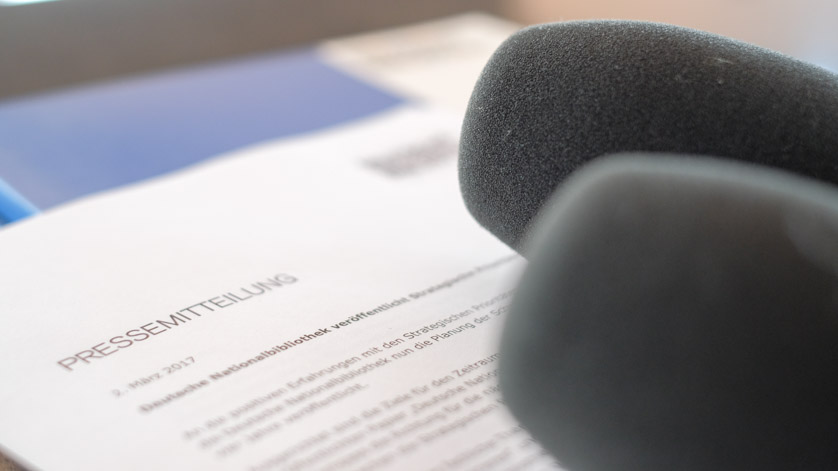Exhibition: “Brausepulver im Nachtgeschirr”– 100 Jahre Humor in deutschen Zeitschriften

Press release: 16.5.2017
Exhibition of the German Museum of Books and Writing of the German National Library in Leipzig
21 May to 30 September 2017
Opening at 11:30 on 21 May 2017
“Brausepulver im Nachtgeschirr” is the title of the new gallery exhibition celebrating “100 Jahre Humor in deutschen Zeitschriften” being displayed at the German Museum of Books and Writing of the German National Library. The exhibition has been curated in cooperation with the Institute of Communication and Media Studies of the University of Leipzig, and will be on display from 11:30 next Sunday.
The 20th century has gone down in history as a century of wars and criminal regimes. But an era of laughter? Humour, satire and nonsense have certainly been universally available for more than 100 years. The “magazine”, as a medium, has played a major role here. The humorous magazines of the 20th century poked fun at various topics of interest to the “masses”. Humourists and satirists also expressed unpleasant truths, the equivalent of putting “baking powder in the chamber pot”, to loosely translate the title of the exhibition. Harmless humour or sharp satire, ribald frivolity or silly nonsense: humour in all its popular forms can speak volumes.
The gallery exhibition in the German Museum of Books and Writing of the German National Library, which is opening to coincide with International Museum Day on May 21, presents examples of well-known and less familiar chapters in the history of German humour. Under the headings “Frischer Wind in alten Mauern? Kaiserreich und Erster Weltkrieg”, “Eine Fabrik für Zeitsatire und ihr Ende. Weimarer Republik und Drittes Reich” and “Die lange Nachkriegszeit des deutschen Humors. DDR und Bundesrepublik Deutschland” the exhibition is an exploration of the humorous - a topic “which is often not taken seriously by academia,” as curator Patrick Merziger, junior professor at the Institute of Communication and Media Studies of the University of Leipzig, emphasises. “Yet humour is not only popular, it also says a lot about our society: who laughs with whom, about whom, and in what situations? What we laugh about, and when the laughter sticks in our throat.”
The exhibition was developed as part of a seminar held in cooperation with the German Museum of Books and Writing. “For the Museum, as a heritage-preserving memory institution, such collaborations provide new input which is both academically inspiring and also 'refreshing',” according to Stephanie Jacobs, head of the German Museum of Books and Writing. “It also ensures that the collections of the Museum, which have been gathered over a period of more than 130 years, are applied to current issues and thus reappraised in new social contexts.”
“Brausepulver im Nachtgeschirr” – 100 Jahre Humor in deutschen Zeitschriften
Exhibition of the German Museum of Books and Writing of the German National Library in Leipzig
21 May to 30 September 2017
Tuesday to Sunday 10:00-18:00, Thursday 10:00-20:00,
Holidays (except Mondays) 10:00-18:00.
Free admission.
Exhibition opening: 21 May 2017 at 11:30
Welcome speech: Michael Fernau, Director of the German National Library in Leipzig
Introduction: Dr. Stephanie Jacobs, Head of the German Museum of Books and Writing
Talk: Jun.-Prof. Dr. Patrick Merziger: “Darf man über Sachsen lachen? Die Kampagne gegen Leipziger Komiker im Nationalsozialismus"
Note regarding images
In addition to the downloadable images listed below, the following images are also available to supplement reports: please contact j.rinck@dnb.de
- John Heartfield: Einband zu Kurt Tucholsky: Deutschland, Deutschland über alles.
© The Heartfield Community of Heirs / VG Bild-Kunst, Bonn 2017
- Thomas Theodor Heine: Karikatur zum Titelblatt des Simplicissimus vom 17.08.1914.
© VG Bild-Kunst, Bonn 2017
Background
The book has shaped our culture and civilisation like no other medium. For centuries our knowledge about the world and its peoples has been stored in books. The task of the German Book and Writing Museum of the German National Library is to collect, exhibit and process evidence of book and media history. Founded in 1884 in Leipzig as the Deutsches Buchgewerbemuseum (German Book Trade Museum), it is the oldest museum in the world in the field of book culture, and also one of the most important with regard to the scope and quality of its stocks.
At the Institute of Communication and Media Studies in Leipzig – the oldest institute of its kind in Germany - the junior professorship in communication history concerns itself with the importance of media in society and with the development of public spheres since the 18th century. The focus is on mediatisation in the twentieth century, i.e. the rise of books, the press, film, radio and television in the “century of mass media”. Communication history therefore also provides an opportunity to reflect critically upon phenomena which seem self-evident to us as members of today's “media society”.
Contact person
Dr. Stephanie Jacobs
Contact: s.jockel@dnb.de

